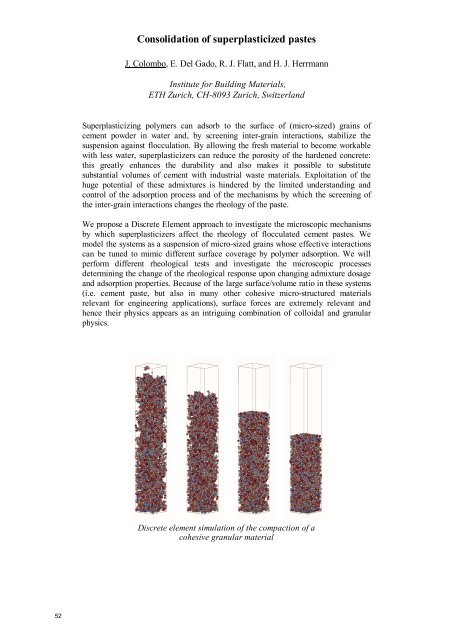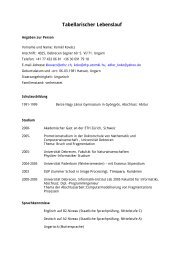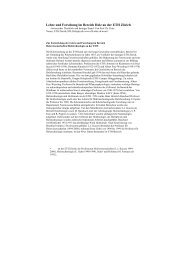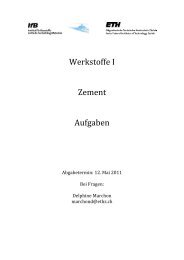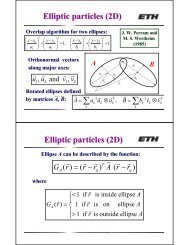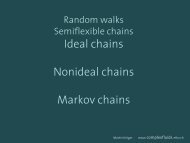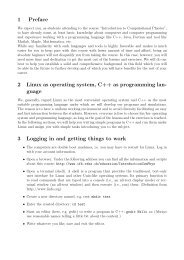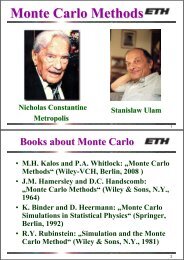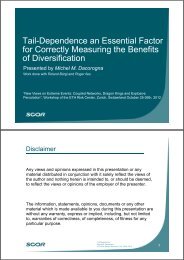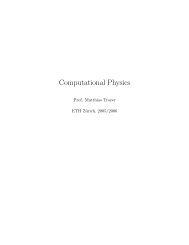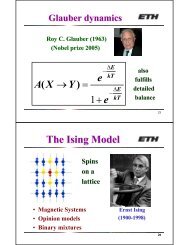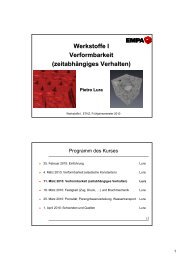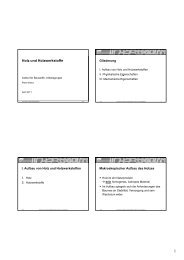Here - Institute for Building Materials - ETH Zürich
Here - Institute for Building Materials - ETH Zürich
Here - Institute for Building Materials - ETH Zürich
You also want an ePaper? Increase the reach of your titles
YUMPU automatically turns print PDFs into web optimized ePapers that Google loves.
Consolidation of superplasticized pastesJ. Colombo, E. Del Gado, R. J. Flatt, and H. J. Herrmann<strong>Institute</strong> <strong>for</strong> <strong>Building</strong> <strong>Materials</strong>,<strong>ETH</strong> Zurich, CH-8093 Zurich, SwitzerlandSuperplasticizing polymers can adsorb to the surface of (micro-sized) grains ofcement powder in water and, by screening inter-grain interactions, stabilize thesuspension against flocculation. By allowing the fresh material to become workablewith less water, superplasticizers can reduce the porosity of the hardened concrete:this greatly enhances the durability and also makes it possible to substitutesubstantial volumes of cement with industrial waste materials. Exploitation of thehuge potential of these admixtures is hindered by the limited understanding andcontrol of the adsorption process and of the mechanisms by which the screening ofthe inter-grain interactions changes the rheology of the paste.We propose a Discrete Element approach to investigate the microscopic mechanismsby which superplasticizers affect the rheology of flocculated cement pastes. Wemodel the systems as a suspension of micro-sized grains whose effective interactionscan be tuned to mimic different surface coverage by polymer adsorption. We willper<strong>for</strong>m different rheological tests and investigate the microscopic processesdetermining the change of the rheological response upon changing admixture dosageand adsorption properties. Because of the large surface/volume ratio in these systems(i.e. cement paste, but also in many other cohesive micro-structured materialsrelevant <strong>for</strong> engineering applications), surface <strong>for</strong>ces are extremely relevant andhence their physics appears as an intriguing combination of colloidal and granularphysics.Discrete element simulation of the compaction of acohesive granular material52


